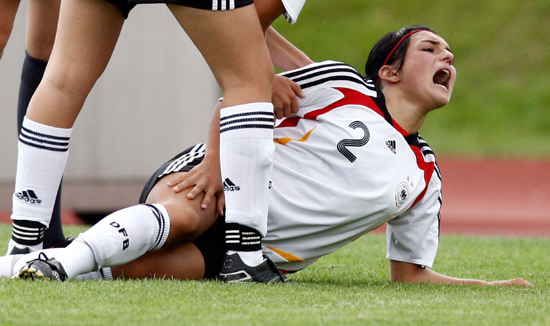Injuries are often part of an active lifestyle, but there are ways to avoid them. The biggest cause of sports and fitness-related injuries is not paying attention to the body. The people who get into trouble are those who try to ignore the body’s basic signal to let up. Although some problems can’t be avoided, there are three basic rules to follow to minimize your injury risk:
- If something hurts, don’t do it.
- If you’re feeling sick, stop.
- If you are injured, take time to recover.
There’s a balance when it comes to your sports and fitness regimen. Be proactive and head the following guidelines:
- Always warm-up and cool-down before your game and workout.
- Build your fitness level gradually.
- Use the right equipment for your sport or activity, including shoes and protective gear
- Know your limits.
R-I-C-E
If you do find yourself on the injured list, see your doctor to assess the severity of your condition and determine if any special treatment is necessary. For many injuries, including strains and sprains, the recommended first-aid during the first 72 hours is known by the acronym RICE, which stands for rest, ice, compression, and elevation.
- Rest – Rest is necessary to prevent further damage to the injured part of the body.
- Ice – The use of ice reduces inflammation, slows down swelling, and promotes faster healing.
- Compression – Compression, usually with an elastic wrap, is often used when applying ice to help reduce swelling.
- Elevation – By elevating the injured part above the level of the heart, gravity can assist moving fluid away from the injured area.

